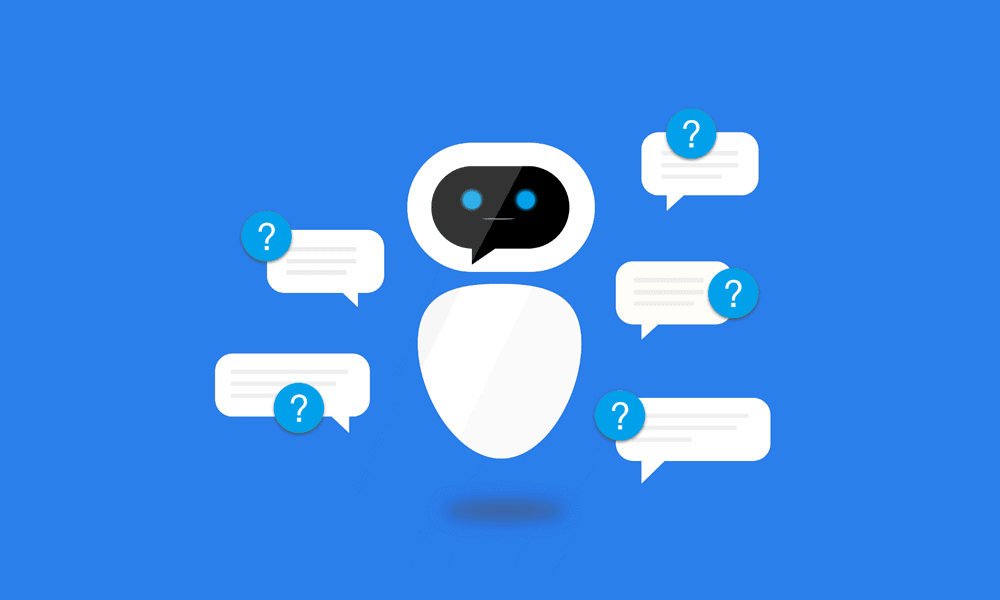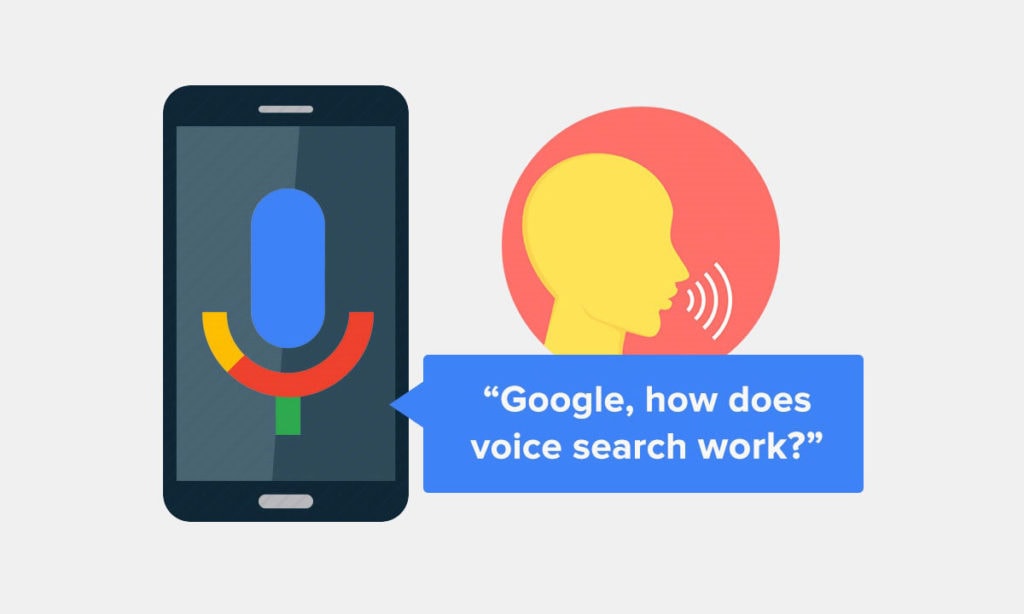The Role of AR and AI in eCommerce Stores
With new technologies introduced daily, Artificial Intelligence and Augmented Reality have forever changed the world by opening us to new and uncharted territories.
Whenever someone mentions artificial intelligence, the first thought or image that may spring to mind may be a scene from the cult film Blade Runner 1982, I, Robot, or maybe even Terminator. But rest assured, Skynet's not happening anytime soon… or is it?
When we talk about the eCommerce industry, rest assured, it's not about sentient humanoid robots taking over the world and more about maximising operational efficiency through learning technologies and algorithms.
Table of Contents
So What Is AI In eCommerce?

In lay terms, Artificial Intelligence or AI is simply the application of computers to perform tasks that typically require human intelligence. AI surrounds us without knowing it; we may use or come across it daily. From the recommendations you receive, virtual assistants, AI chatbots, and voice-enabled search are a few of AI's many uses, not just within the eCommerce industry but overall.
Artificial intelligence helps online eCommerce stores deliver a much more enhanced CX, aka Customer Experience, both on their eCommerce website and off by analysing all the data collected of the business and its customers to help make better business decisions and accurate forecasts about their behaviours and buying patterns.
Applications of AI in eCommerce
Artificial Intelligence has many applications in the eCommerce industry and every industry! To fully understand how AI works and could impact your business (good or bad), let's give you a small run-down of the different components that make up artificial intelligence.
AI is an umbrella term that encompasses many things, such as NLP, ML, & data mining, to name a few.
What's Data Mining?
Data mining is simply identifying patterns, anomalies, and links in datasets to make future predictions.
What's NLP (Natural Language Processing)?
NLP, better known as Natural Language Processing, is simply the communication between people and computers and how computers comprehend language.
What's Machine Learning?
In lay terms, ML (machine learning) is a small but vital part of AI (artificial intelligence). It can imitate human intelligence by self-learning from data and then applying what it learned, repeating the process as many times as needed and making more accurate predictions with each cycle.
AI is now advanced enough to help businesses boost sales, streamline operations, maximise efficiency by removing redundancies, improve customer relationships, mitigate risks, and more.
AI currently has a plethora of applications in eCommerce development, such as:
- Predictive analytics
The use of machine learning to predict the behaviour of consumers is known as Predictive Analytics. It is used in almost every primary industry, from healthcare, finance, manufacturing, insurance, eCommerce, and more. By assessing your audience's behaviour patterns, you can forecast their future behaviour, adopting a proactive rather than a reactive approach to help best fulfil their needs. Predictive Analytics enables you to:
Predicting their wants to turn them into recurring customers
Retail stores and similar businesses depend on attracting new clients while maintaining recurring ones. It doesn't matter whether you interact with them in person or online; every interaction you have with them is an effort to convert them into potential prospects and, hopefully, recurring customers.
All data and comments regarding customer interactions, chats, and reviews are sent across all social media networks to forecast consumer behaviour and eventually apply it in interaction with customers. For instance, you may utilise the existing information about customers already in the system to personalise their experience.
Improved Customer Satisfaction Rates
Predictive analytics calculates probability and forecasts consumer satisfaction ratings using various metrics and indicators compared to other methodologies. You can take that a step further by using a neural network model. It'll consider a much more comprehensive range of metrics and variables to gauge and accurately predict customer satisfaction rates and how to retain them best. The best part is that a neural network model will self-learn to make more accurate predictions with each cycle.
Improving Customer Retention
Predicting the clients most likely to leave is possible using predictive analytics. With the help of this modelling tool, while also identifying high-churn consumers, you can take proactive rather than reactive measures to keep them as customers by giving them discounts, loyalty rewards, or promotions.
Predicting Patterns of Behavior
Customer segmentation can enhance other redundant procedures to produce more tailored experiences and effective marketing campaigns. Businesses can use machine learning to analyse how each consumer segment could respond to various stimuli and what factors might cause them to make a purchase decision or convert, demonstrating the best methods for marketing each category to drive sales.
Predict customer needs to personalise content
Predictive analytics can help identify and pinpoint the purchasing habits of your desired customer segment to promote pertinent items and generate sales. The predictive analysis's Decision Tree model replicates a customer's journey in each category, assisting in determining which product or channel marketers have the highest probability to convert them and should be used to approach them.
- Recommendations
Recommendations are based on previous purchases and can help you improve your conversions. You can use the insights you gain from customer data to target your audience's specific interests, helping generate more sales.
- Personalisation
AI-based personalisation means using AI to create dynamic experiences for each user tailored to their tastes. This helps enhance your customers' user experience while increasing engagement, creating a sense of loyalty, and helping drive sales.
Improves User Experience
Whenever a customer receives a recommendation for a product they are interested in or looking to buy, they will probably find it fascinating, helping further enhance the User Experience of each customer.
Boosts conversions
Giving users a personalised customer experience can help drastically increase conversion rates.
Improved customer retention & loyalty
Giving your users a personalised experience can help generate value for your brand while significantly affecting and enhancing their customer experience, from when they entered your store to when they left, leaving a lasting impression.
- Chatbots
Chatbots are software that can act as virtual assistants. They can engage with customers, answer questions, and provide helpful information. Some of the most common examples of AI-powered chatbots are Slush, Dominos, etc.

24/7 support
Chatbots can seamlessly provide uninterrupted support to thousands of customers instead of hiring a dedicated support staff.
Improves customer support efficiency
Chatbots can address common queries then and there while minimising the human intervention needed to respond to such inquiries.
Cost-effective
Since chatbots are automated and can handle customers in bulk, it reduces the need to hire multiple support agents to cater for those queries. It is an affordable one-time investment instead of hiring a dedicated support team.
- AI-generated Description
A good product description is vital in converting a visitor to a lead or customer. Several AI tools like Jasper and Tailwind can help business owners in creative writing or content-related aspects, product descriptions being one of them. These AI marketing tools can generate stunning product descriptions that compel readers to buy or avail of products and services.
Time is Money
Writing a compelling product description isn't everyone's cup of tea. So rather than spending hours doing it yourself, you can save time you'd rather spend running your business.
Cost-effective
These AI tools can help generate captivating copies of content at a fraction of the price of hiring someone to write them for you. That's money better spent elsewhere.
Unique Content
One of the key benefits of using AI tools to generate content is that whatever they create is 100% unique, original, and plagiarism free. Using these tools also helps mitigate the risk of human errors such as structural, grammatical, or punctuational.
- Image Recognition & Image Search
Imagine trying to search for a product online but struggling to find it. This is a common occurrence for most online shoppers. This is where reverse image search, a feature built using AI, comes into play. Artificial Intelligence and self-learning algorithms can help users identify the name of the object or product in the picture they chose and a list of similar products that users searched for that they might be interested in.
Companies like Amazon and Alibaba have added the “reverse image search” feature to their eCommerce store, and others will soon follow suit. Even Google has the reverse image search feature available in their search engine. Features like these enable:
Enhanced product discovery
Customers can now use pictures to search for products, helping open new avenues for them in product discovery.
Enhanced (UX) User Experience
Adding a reverse image search functionality to your store can help significantly boost and add value to the customer and shopping experience of users.
- Voice Search
The existence of voice search assistants like Siri and Google has made life relatively more straightforward and has revolutionised internet user behaviour. You have to say the command “Remind me about the meeting today at 4 pm” to set a reminder. With machine learning and artificial intelligence, this was conceivable.
Google claims that voice search currently accounts for 20% of all internet searches, and these reports suggest these figures will only grow over time. Artificial Intelligence and machine learning have enabled significant advancements in speech analysis and contextual reasoning, creating a more precise and accurate voice recognition system. How people “search” has been completely altered forever.

Time-efficiency
Voice searches are quick and efficient from the consumer's POV. They help significantly reduce the time and effort needed to type and search for anything, including product searches.
Reduced chances of errors
To err is human. People make mistakes while typing, especially when they're in a hurry or using their mobile phones to type. Voice search not only enables lightning-fast searches; it also significantly reduces the chances of errors typically associated with typing manually while being advanced enough to understand what the customer is precisely searching for.
Improved customer experience
Voice searches help provide a unique and effortless way for users to search queries or products while enhancing the overall customer experience.
With the amount of research and development conducted in artificial intelligence, this list will keep growing!
How Can AI Help My Business?
Tech giants like Amazon are at the forefront of the fantastic digital race, using AI to optimise and enhance almost every aspect of their business. Others are soon to follow suit; hopefully, you will too. If you're still unsure, here are some ways AI can help your business achieve new heights.
Optimized Targeted Marketing
A deep personalisation approach is possible with significant advancements in Artificial Intelligence (AI) and machine learning (ML). You can now zero in on precisely what your customers want while conveying the most effective messages by analysing large datasets to identify patterns in their purchase histories and browsing material. Take the infamous Target Pregnancy Case Study, for example; it shows you how far AI has come and its limitless potential.
Increased Customer Retention
Research conducted by McKinsey hinted at a potential increase of up to 10-15% in revenue and customer retention through omnichannel personalisation strategies. The report also sheds light on the cruciality of better data and in-depth insights to improve personalisation and generate more value. It also discussed how personalisation will replace traditional marketing methods in the coming years.
Automation
We can use AI to automate almost anything, eliminating the “human element”. From things like healthcare management and logistics management to virtual assistants. In the eCommerce industry, it is used to recommend products online, offer discounts, coupons, loyalty rewards, low-level support, and more!
Improved Sales Process
Using AI, you can optimise your sales pipeline by gathering more customer data, automating a follow-up on cart abandonment, and further funnelling your audience by engaging them through AI-based chatbots. Undoubtedly, AI is starting to and has to some extent, impacted the eCommerce industry.
What About AR In eCommerce?

Augmented Reality, better known as AR, is simply an interactive experience that overlays computer-generated content with reality. The most common example would be Snapchat or Instagram filters.
In eCommerce terms, it means helping bridge the gap between physical and online eCommerce stores while providing users an immersive shopping experience.
AR has a plethora of applications in the eCommerce industry. Companies are now recognising the limitless potential for its application in creating a unique experience for their customers. Let's take Nike, for example; they launched Nike Fit, an app that uses your phone's camera to accurately measure (up to 2mm) the size of your foot so you always get the perfect fit. But Nike is just one example out of a dozen more companies investing in Augmented Reality technology.
AR Applications In eCommerce
There exist numerous applications of Augmented Reality in the eCommerce industry. Mainly because of hardware restrictions, this technology still has certain limitations. However, with the amount of research and development being done, AR becoming an integral part of our daily lives is not so distant.
- Virtual try-on solutions.
What's one of the biggest problems in ordering online? There must be a way to test whether the product fits or looks good on you. They overcame this problem by integrating Augmented Reality into the online shopping experience. Such as the example of Nike Fit we gave above, brands are rushing to incorporate virtual try-on solutions to enhance the user's experience.
- Social Media Filters
With Snapchat and Instagram filters prime examples of AR technology, other brands were sure to follow in their footsteps and experiment with AR technology. Kohl's, a retail chain store, partnered with Snapchat to create a virtual closet for users. Users could now “try on” different products they sold using Snapchat filters (Augmented Reality). This helped people feel more confident while buying items because they could now see themselves wearing them! Brands which adopted AR reported an increase in conversion rates by up to 40%!
- Preview placement
Previewing the placement of any object to determine what it will look like is possible through AR technology. IKEA took the opportunity to create IKEA Place, an app which lets customers visualise what their products will look like in their homes. This “try it before you buy it” feature helped dramatically enhance the user experience while giving customers a sense of security, confidence, and satisfaction in the investment they are about to make.
- Interactive User Manuals
Another valuable application of Augmented Reality is in creating interactive user manuals. This application was showcased when IKEA launched another app called AssembleAR that previewed life-size 3D animations of diagrams and step-by-step instructions to simulate and clarify the assembly process. This helped turn the previously-dreaded furniture assembly process into a fun, interactive, and engaging activity for the buyers! Augmented Reality holistically compliments eCommerce, even after sales. The only variable is how creative you are with it.
How Can AR Help Your Business?
The challenge of displaying tangible, 3D goods in a virtual, 2D environment is one of the biggest challenges in the eCommerce industry. Augmented Reality helped bridge this gap by making it simpler to display items and giving customers a greater grasp of what they purchase online. But apart from this, AR can help your business;
1 – Increase customer engagement.
Due to the inherent interactivity of AR, it is simple for users to become addicted to your website. Additionally, the more time they spend on your e-commerce site, the more likely they will convert! Even if they're just window shopping, the increased engagement shows they are more likely to remember you.
2 – Reach new customers.
Augmented Reality is still relatively new and is just starting to gain traction. You can use this opportunity to get ahead of your competition and get people's attention by creating a buzz.
3 – Reduce returns.
AR has revolutionised the traditional ways of providing information – through static images and explainer videos. Apart from offering a 3D render of the products, customers can now visualise what that product will look like in their home or desired space, decreasing the chances they return a product because it's different from what they anticipated.
But what does all this mean for the eCommerce industry?
The eCommerce industry has been drastically changed by introducing new technologies over the last decade. Although these technologies like Artificial Intelligence and Augmented Reality are far from perfect, one can only wonder what the future has in store for us. But one thing is for sure, soon, everything around us will be AI and AR-powered. So use this opportunity to invest before it becomes part of the bandwagon to help you stay ahead of your competition. Contact an eCommerce store development and next-gen company and fulfil your needs.
Author Bio: Junaid Mohsin is a professional digital marketer and a tech blogger by passion. He has been part of the digital marketing world for over a decade, amassing an ocean of knowledge he uses to impart his wisdom through his blogs.
